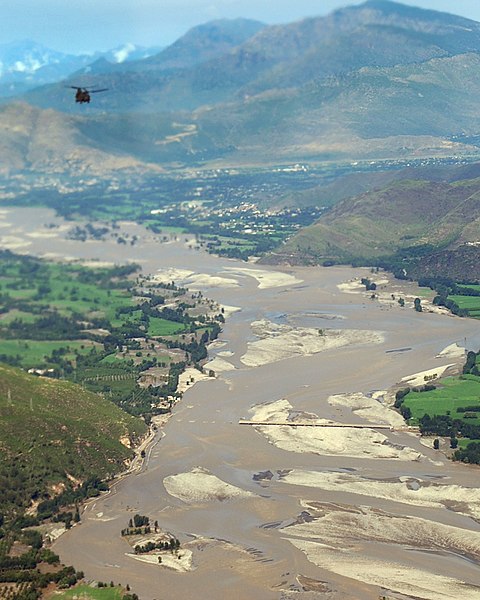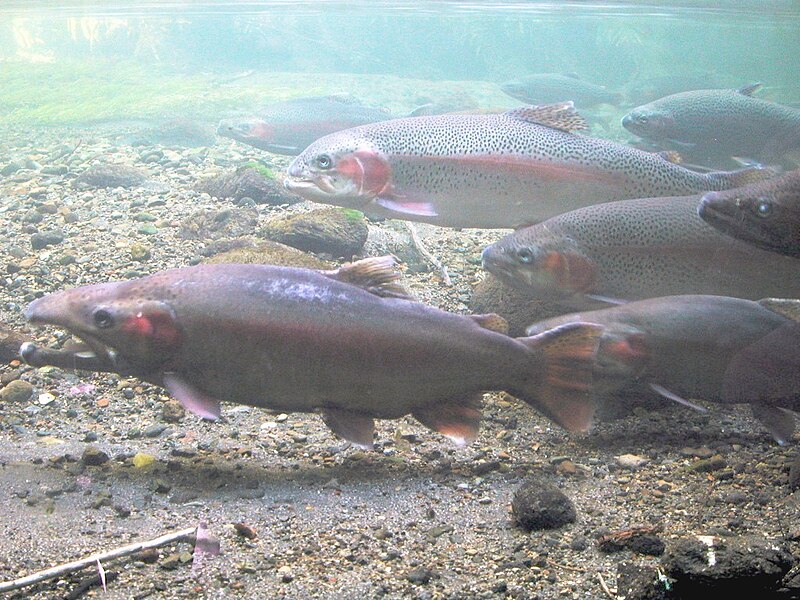 Anyone who has ever experienced a flood first hand will have very few (if any) positive things to say about the disaster after the water recedes. Recent flooding in the northeast left thousands to bucket mud and sediment from their homes and some lost their homes entirely. Floods for us are rarely a benefit, but for fish and waterways, flooding performs vital work. Despite the unfortunate individuals that find themselves stranded in backwater pools and puddles (most of which are picked off by advantageous predators), the fish that remain or find their way nack to an adequate stream or river can thrive after these events. Lets explore how wild fish respond to flooding and how these events can relate to some species we keep in aquariums.
Anyone who has ever experienced a flood first hand will have very few (if any) positive things to say about the disaster after the water recedes. Recent flooding in the northeast left thousands to bucket mud and sediment from their homes and some lost their homes entirely. Floods for us are rarely a benefit, but for fish and waterways, flooding performs vital work. Despite the unfortunate individuals that find themselves stranded in backwater pools and puddles (most of which are picked off by advantageous predators), the fish that remain or find their way nack to an adequate stream or river can thrive after these events. Lets explore how wild fish respond to flooding and how these events can relate to some species we keep in aquariums.
We see destruction when we see floods occur, but for fish in natural waterways floods provide rather regenerative qualities to the native habitat. The swift water flushes sediment and debris out of pools and runs allowing fish to hide and move about more freely. Depending on severity and degree of the flooding, the layout of streams and rivers can go through dramatic changes. Rushing water can carve new and deeper pools in creek beds. Rotting wood and roots may be washed downstream, but they may be replaced with newly fallen trees and branches which create new places to hide. Sediments may fill in some shallow pools and create new gravel beds and sand bars where fish can feed and reproduce. New sediment beds are also prime real estate for scuds and other macroorganisms to colonize, creating a rich food source for other species. While the fish find refuge in underwater nooks and recesses their community gets a makeover! Trash and pollutants can also be swept away, leaving a cleaner environment once the water clears.
Wild fish are generally resilient when it comes to naturally occurring events. While there will inevitably be some mortality, mature fish in particular seem to know what to do and where to go to stay safely in thier home. Mortality of fry and young fish may be somewhat dependent on the time of year when the flood occurs and how intensely the waters flow. Populations may show some decline in the short term, especially if the flooding occurs during or soon after fish may have spawned. Eggs, fry and younger fish may be damaged or carried away in the deluge. Populations typically rebound the following season.
Flooding may also help to increase diversity in some bodies of water. Fish of varing species and new bloodlines may find themselves in an entirely different areas (or even in entirely different bodies of water) where they can contribute to a new gene pool and establish new populations under the right conditions. Better water quality and increased food availability (insect populations also tend to increase after floods) may lead to population booms and more robust individuals within the community to bolster the overall population. In some rivers and streams, natural flooding is impeded by man made dams and other structures. Wildlife management in some of these areas create artificial, controlled floods to do what natural flooding should accomplish, thus aiding native fish populations.
 You may ask how this all relates to the home aquarium. Unless you’re really unfortunate, periodic flooding probably doesn’t occur in you home or the aquarium. However, periodic water changes and other fabricated conditions in the tank may fool a fish into spawning like they would in the wild after a flood. Some species rely largely on environmental cues to incite spawning. This is another reason why regular tank and water quality maintenance are so important to the vitality of your fish. Fluctuations in pH, temperature, and other conditions can tell them that the time is right for mature fish to spawn. When you provide fresh water after a water change, detritus-free, freshly stirred substrate, new rock, plants or wood formations, or additives and supplements that keep the water just as the fish like it, it will not only keep them happy and healthy, it may ripen some species and make them ready to reproduce. Routine water changes are equally important to maintain eggs and fry once they appear if you want them to grow up healthy. A routine water change may not look like a flood to you, but a new 5 or 10 gallons of water may give your fish just the incentive needed to make some babies. This version of “controlled flooding” can be just as beneficial, but without sticks, bottles, mud and all of the other unpleasant things that may appear in the great outdoors.
You may ask how this all relates to the home aquarium. Unless you’re really unfortunate, periodic flooding probably doesn’t occur in you home or the aquarium. However, periodic water changes and other fabricated conditions in the tank may fool a fish into spawning like they would in the wild after a flood. Some species rely largely on environmental cues to incite spawning. This is another reason why regular tank and water quality maintenance are so important to the vitality of your fish. Fluctuations in pH, temperature, and other conditions can tell them that the time is right for mature fish to spawn. When you provide fresh water after a water change, detritus-free, freshly stirred substrate, new rock, plants or wood formations, or additives and supplements that keep the water just as the fish like it, it will not only keep them happy and healthy, it may ripen some species and make them ready to reproduce. Routine water changes are equally important to maintain eggs and fry once they appear if you want them to grow up healthy. A routine water change may not look like a flood to you, but a new 5 or 10 gallons of water may give your fish just the incentive needed to make some babies. This version of “controlled flooding” can be just as beneficial, but without sticks, bottles, mud and all of the other unpleasant things that may appear in the great outdoors.
I don’t wish the devastation of a flood on anyone, but despite their ferocious nature they do play practical roles for aquatic wildlife populations. Keep their positive purpose in mind if the waters should ever flow your way! Meanwhile be sure to keep your tank happy with a little faux flood action at home.
Thanks,
Patty
 That Fish Blog – Aquarium Advice and Information
That Fish Blog – Aquarium Advice and Information


Floods do have a negative impact on the native fishes on that reason that is not mentioned. Non-native speicies will also benefit as they can use the water bridges to colonise other parts of the aquatic regions. I would be bad if they are already dominant. That is probably why it is important as aquarists not to release any species into the natural waterways.
This is really great and interesting post. Taking care of fish and aquariums really needs a careful maintenance. Though flood is a big disaster to mankind, its good to hear that fish are resilient to it. Thanks for sharing this.